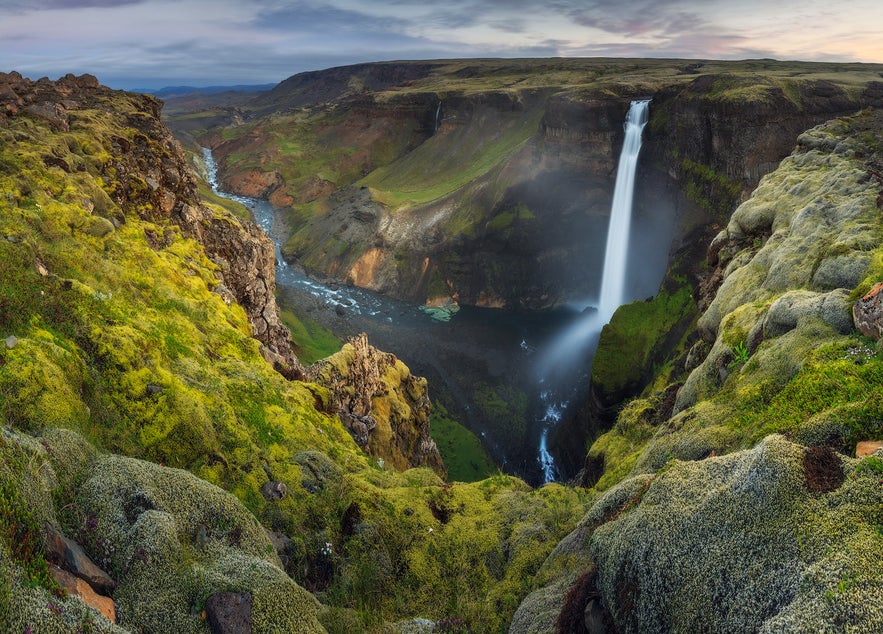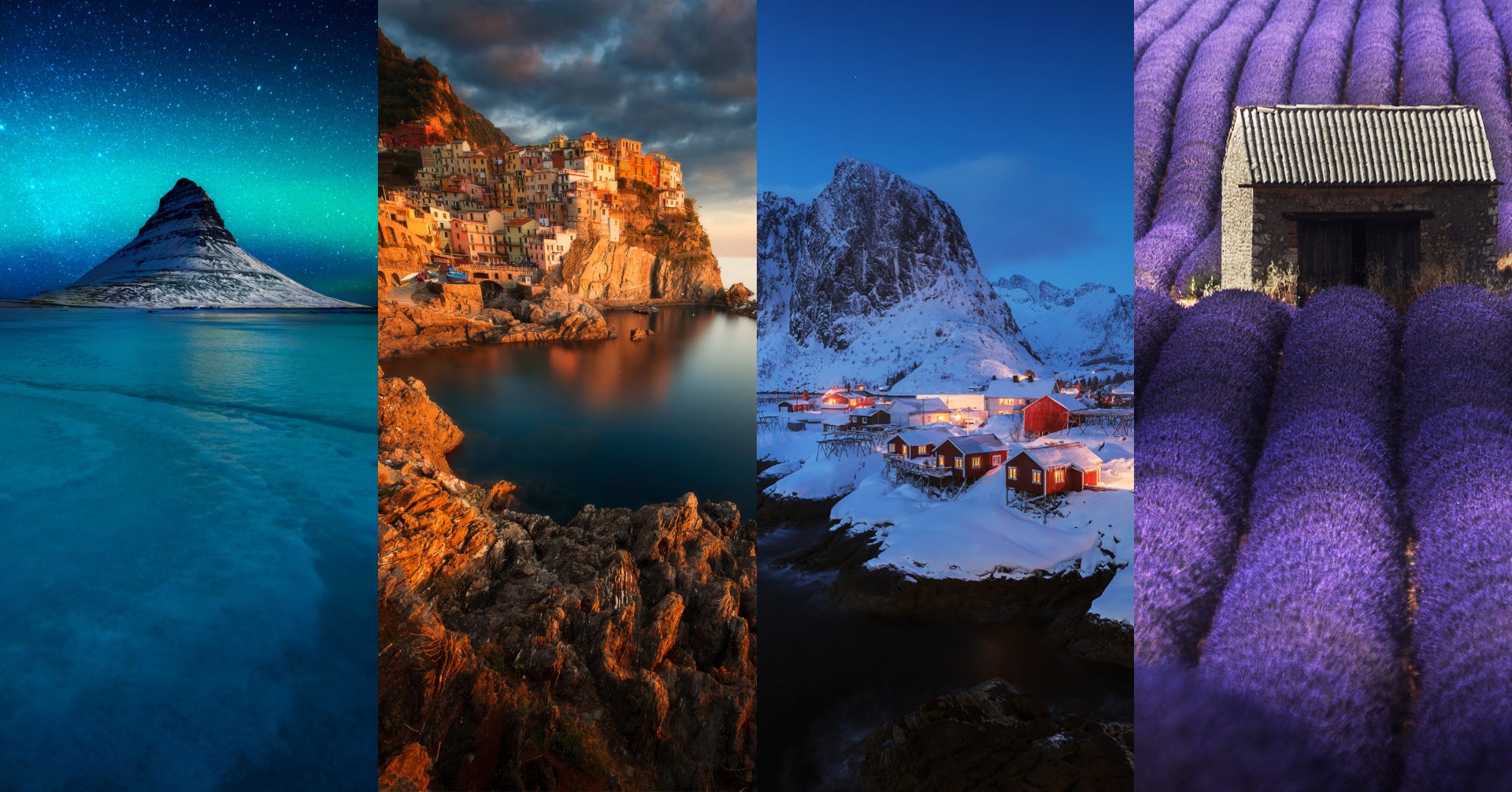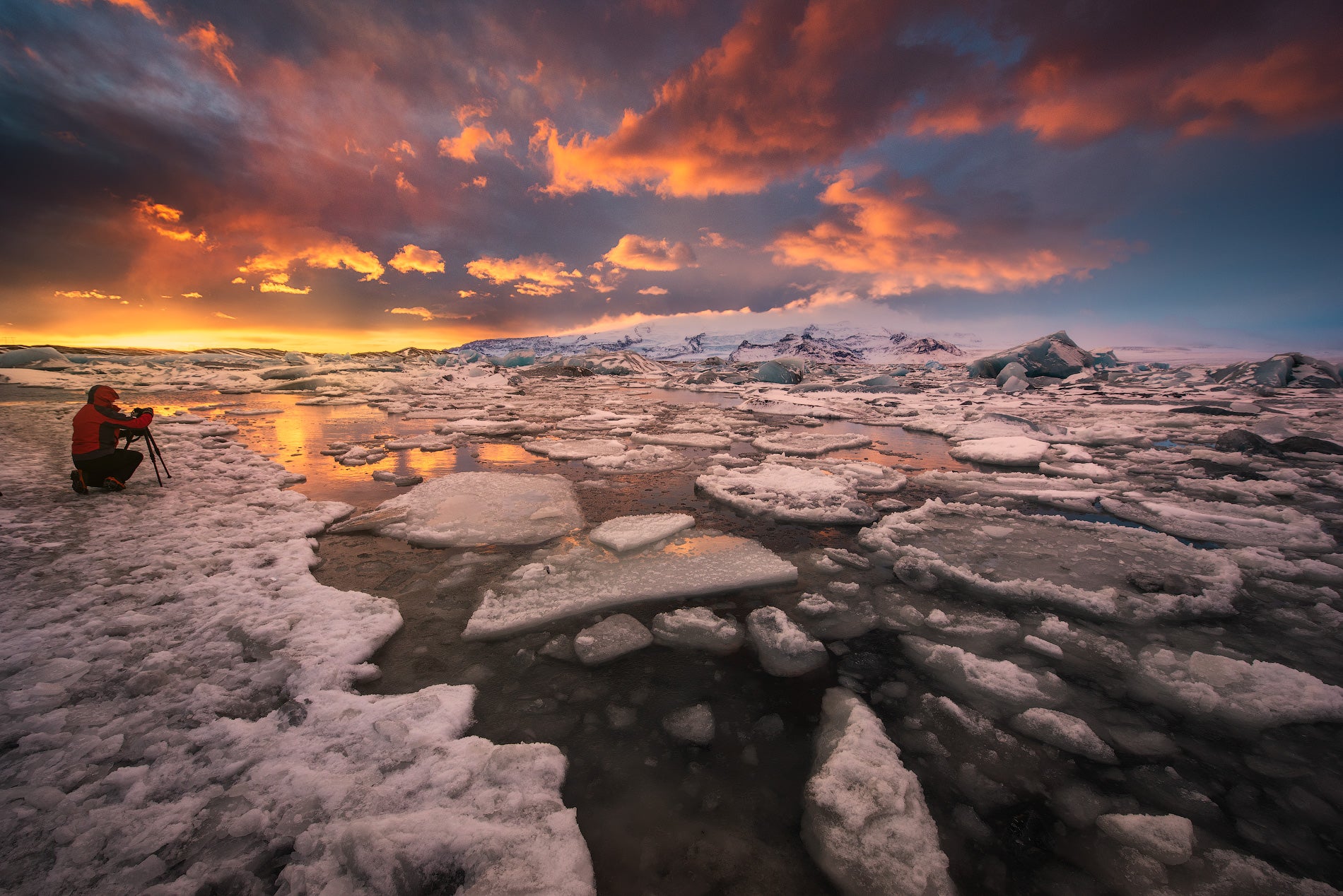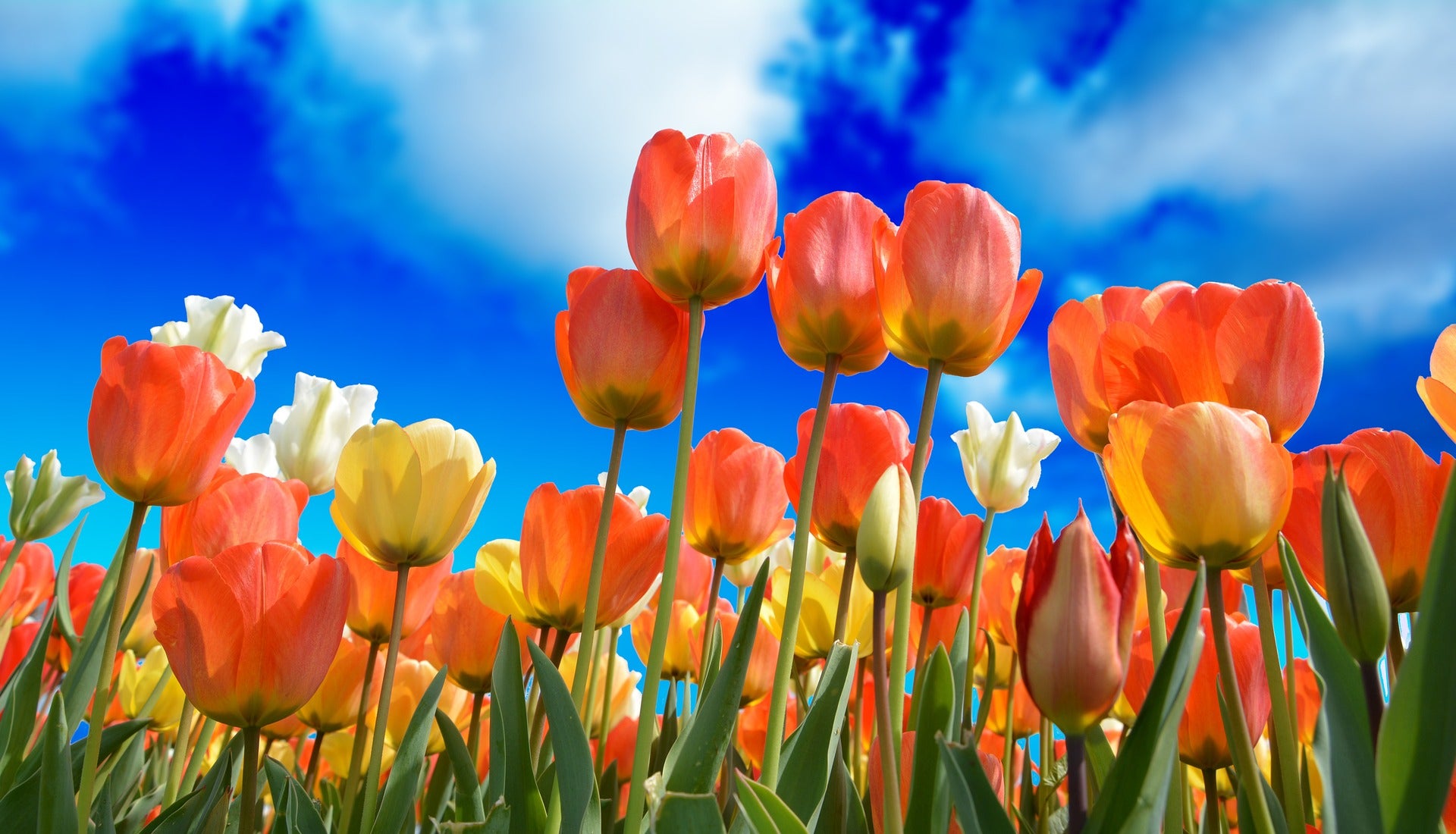
You may have heard that Iceland experiences a mixture of all four seasons in a day. Grey skies can suddenly give way to bright sunshine, followed by unforgiving rain that clears quickly to yield fabulous rainbows. But if you have the preconception that it’s all frozen and snowy, then you’ll be surprised to learn that there are actually distinct seasons in this country which make for diverse photographic opportunities. So what exactly is the best time to visit Iceland for photography?
- Join us on this 11 Day Iceland in Autumn Photography Workshop
- Learn these Recommended Camera Settings for Landscape Photography
Like most other places on Earth, the seasons in Iceland are marked by unmistakable changes in weather and ecology, as well as the amount or intensity of daylight. Variations in these factors may cause animals to migrate and plants to become dormant. They may even result in natural phenomena that are completely unique and which may only be seen during a particular window of time.
Of course, changes in the seasons will affect what you'll be able to photograph. In fact, some of the most common questions that people ask us at Iceland Photo Tours is when and where to photograph things, such as puffins, waterfalls, ice caves, the Highlands and the Northern Lights. Put simply, photography in Iceland is heavily influenced by the seasons. So to make it easier for you to get through the seasons and prevent you from missing out on that one thing that you want to photograph, we’ve compiled a guide on where and when to shoot, meaning that you won’t have to waste your time relying so heavily on luck while you’re here!
Winter Photography in Iceland
 Winter is the best time to see the Northern Lights in Iceland. Photo by: 'Edwin Martinez'.
Winter is the best time to see the Northern Lights in Iceland. Photo by: 'Edwin Martinez'.
Other seasons in Iceland just don’t measure up to the incredible photographic opportunities that you’ll experience in winter. From snowy landscapes to enchanting displays of the Northern Lights, this season is sure to leave you completely spellbound.
Taking place from November until March, winter in Iceland equals shorter days with beautiful light. Be prepared to experience approximately 4-5 hours of daylight in mid-winter, slowly increasing as the season progresses. It won’t be the kind of light that you’re probably used to. The Arctic winter light in Iceland has a tranquil eeriness about it, creating the sense that you’re almost on another planet. Sunrises and sunsets may last for a couple of hours at a time, with the soft moodiness of the hues making these moments perfect for photography.
 Expect snow and beautiful light during winter in Iceland. Photo by: 'Iurie Belegurschi'.
Expect snow and beautiful light during winter in Iceland. Photo by: 'Iurie Belegurschi'.
During winter in Iceland, you can usually expect a lot of snow, ice and stormy weather, interspersed with brief moments of clarity and crispness. Within the shortest timespan, a strong and windy snowstorm can turn to absolute sunshine.
However, snow and ice means that driving conditions are not at their best, so roads towards the Highlands, the East and the Westfjords may occasionally close. It may even be difficult for you to reach well-known photographic locations, such as Vík and the Snæfellsnes Peninsula, though if you can get there, then the opportunities to shoot will flow!
Every winter, new and amazing ice caves form in the Vatnajökull glacier in the south-east of Iceland. It is also the only season in the year when you will be able to visit and photograph them.
 Ice caves are accessible in winter. Photo by: 'Iurie Belegurschi'.
Ice caves are accessible in winter. Photo by: 'Iurie Belegurschi'.
On the way to the ice caves, you can stop off for some wonderful photographic opportunities at the Jökulsárlón glacier lagoon, where large chunks of ice float about with the tide, as well as the nearby Breiðamerkursandur – more commonly known as the 'Diamond Ice Beach' – where you will find ice cubes like polished diamonds scattered over the sandy black beach.
 The Diamond Ice Beach is beautiful during winter. Photo by: 'Iurie Belegurschi'.
The Diamond Ice Beach is beautiful during winter. Photo by: 'Iurie Belegurschi'.
For a clear shot of the Northern Lights, Kirkjufell in the west of Iceland is always a sure bet. It’s also worth trying to capture them over the Jökulsárlón glacier lagoon, as well as Vestrahorn at Stokksnes in Iceland’s eastern region. Wherever you decide to go, the key to photographing the Northern Lights is to head out on a night with high forecast of Aurora activity, combined with clear skies or just a little cloud cover.
Spring Photography in Iceland
 The Golden Circle is beautiful during spring in Iceland. Photo by: 'Iurie Belegurschi'.
The Golden Circle is beautiful during spring in Iceland. Photo by: 'Iurie Belegurschi'.
Ah… spring! Occurring during April and May in Iceland, this marvellous season is heralded by a myriad of sights, sounds and smells that will stimulate your senses. The rain brings with it a wholesome, leafy and muddy scent of mushrooms. Meanwhile, the wildlife begins to awaken. Spring is the lambing season, when sheep and their offspring are released by farmers to graze freely. Seabirds will also return to the island, so you may even spot a puffin or two at Dyrhólaey from early April onwards.
In Iceland, spring is the best time of year to photograph waterfalls, when the snow melts and the fresh water thunders into streams and rivers, bringing them back to life. Try your luck at Öxarárfoss, the magnificent waterfall that empties into the heart of the tectonic fault Almannagjá at Þingvellir in the south of Iceland. There are also a number of photographic opportunities at the Geysir geothermal area, with its hot springs and famous geyser, Strokkur.
Unfortunately, much of the Highlands will remain inaccessible during this season, as the snow continues to thaw slowly in the mountains. Also, be aware that as the days begin to get longer during spring in Iceland, you will have less of a chance to capture the Northern Lights. So if you really want to capture the ever-elusive Aurora Borealis, then spring is not the best of times to visit. However, the sunrises and sunsets will linger, so you will have plenty of time to set up your camera gear in order to capture that perfect shot.
- See also: Ultimate Guide to Sunrise Photography
Summer Photography in Iceland
 Lupines and other wildflowers bloom during summer. Photo by: 'Iurie Belegurschi'.
Lupines and other wildflowers bloom during summer. Photo by: 'Iurie Belegurschi'.
Summer in Iceland is a glorious time for photography! During this season, the island is swathed with the warmth and golden glow of the Midnight Sun – a phenomenon during which you will experience close to 24 hours of daylight. This is because the sun travels along the horizon and creates an extended sunset that eventually fades seamlessly into the sunrise. In Iceland, which is also known as the Land of the Midnight Sun, it is possible to have a sunset and sunrise that lasts for hours! So get your coffee ready and be prepared to immerse yourself in the true beauty of nature.
The summer season in Iceland begins in June and continues until August. During this time, you will witness sunsets that turn into sunrises with a spectacular show of colour lasting for hours. This season is an absolute paradise for photographers, as long days mean endless chances to photograph the landscape without the need to rush to reach a destination before it gets dark.
 The Black Church of Budir in summer. Photo by: 'Iurie Belegurschi'.
The Black Church of Budir in summer. Photo by: 'Iurie Belegurschi'.
In the midst of summer, head towards the Snæfellsnes peninsula, where wildflowers will begin blooming and eventually spread like wildfire over the coastline. The Icelandic summer's endless array of wildflowers is one of the country’s most splendid sights and well-worth photographing. You can capture their beauty like a carpet at the foot of the black church of Búðir, or travel along the coastline to see lupines in full bloom from June through until July.
 The Highlands become accessible during summer. Photo by: 'Iurie Belegurschi'.
The Highlands become accessible during summer. Photo by: 'Iurie Belegurschi'.
Towards the end of June, the roads towards the Highlands will begin to open, revealing dramatic photographic opportunities at the geothermal valleys at Landmannalaugar, Kerlingarfjöll and Hveravellir. It is also well-worth visiting areas in the north, such as Lake Mývatn, Hverarond and the uniquely-shaped Hvítserkur sea-stack for golden hour.
 Landmannalaugar in the Highlands. Photo by: 'Iurie Belegurschi'.
Landmannalaugar in the Highlands. Photo by: 'Iurie Belegurschi'.
- See also: Landmannalaugar Photography Day Tour
Moreso, if you fancy getting off the beaten path, then this season is the best time to do it. Try venturing out towards the wonderful, remote wilderness of the Westfjords. Stick to the coast here and you will have a great chance to photograph puffins nesting on the sea cliffs at Látrabjarg.
 You can photograph puffins in Iceland during summer. Photo by: 'Iurie Belegurschi'.
You can photograph puffins in Iceland during summer. Photo by: 'Iurie Belegurschi'.
Autumn Photography in Iceland
 Autumn foliage is colourful in Iceland. Photo by: 'Iurie Belegurschi'.
Autumn foliage is colourful in Iceland. Photo by: 'Iurie Belegurschi'.
Last but not least, autumn is one of the most colourful times of the year in Iceland. It generally occurs between the months of September through to the start of November.
During this season of transitions, Iceland brims with gorgeous earthy hues of red, orange, yellow during fall. Birds chatter away as though it is spring and although the days start to become shorter, the sunlight remains warm. Sunrise is usually around 8am, with sunset happening at around 6:45pm in October. The first frost appears… you might even see a little snow at the beginning of September. Although the weather is unpredictable, it can feel wildly invigorating and exciting.
 The Northern Lights start becoming visible again in autumn. Photo by: 'Iceland Photo Tours'.
The Northern Lights start becoming visible again in autumn. Photo by: 'Iceland Photo Tours'.
The truth of the matter is that photographing Iceland during autumn may be some of the most fun that you will ever have with your camera. Not only will there be an incredible range of colours blanketing the landscape, but you may even have the chance to capture the first shows of the Northern Lights.
Meanwhile, the lowering of the sun highlights the unique geology at Þingvellir, as well as the volcanically active area around Lake Mývatn. It is also worthwhile heading out to Skaftafell National Park for a truly magical experience.
 Lava fields are covered with autumn colours. Photo by: 'Iceland Photo Tours'.
Lava fields are covered with autumn colours. Photo by: 'Iceland Photo Tours'.
As always in Iceland, be prepared for wind – too much can mean that the leaves are completely blown away from the bushes, meaning very little for you to photograph in the landscape besides branches!
It’s also important to be aware that as autumn progresses, the roads to the Highlands will begin to close and some tours to the glaciers will stop running, so you might miss out on the chance to photograph these.
Sea birds such as puffins will also begin to leave Iceland during this season, migrating towards warmer climates. Another thing that you might be interested to know is that autumn is the season for sheep and horse roundups (known as ‘réttir’), when farmers hike up the remote valleys to gather all of their animals and return them to their farms for winter. So if you’re around in Iceland during autumn, then it may be your final chance to photograph puffins, sheep and Icelandic horses for the year!
About the author: Serena Dzenis is a landscape photographer based in Iceland. You can find more of her work on her website or by following her on Facebook and Instagram.
Are you ready to explore Iceland? Find out more about the incredible range of photography workshops and tours in Iceland that we have on offer!












